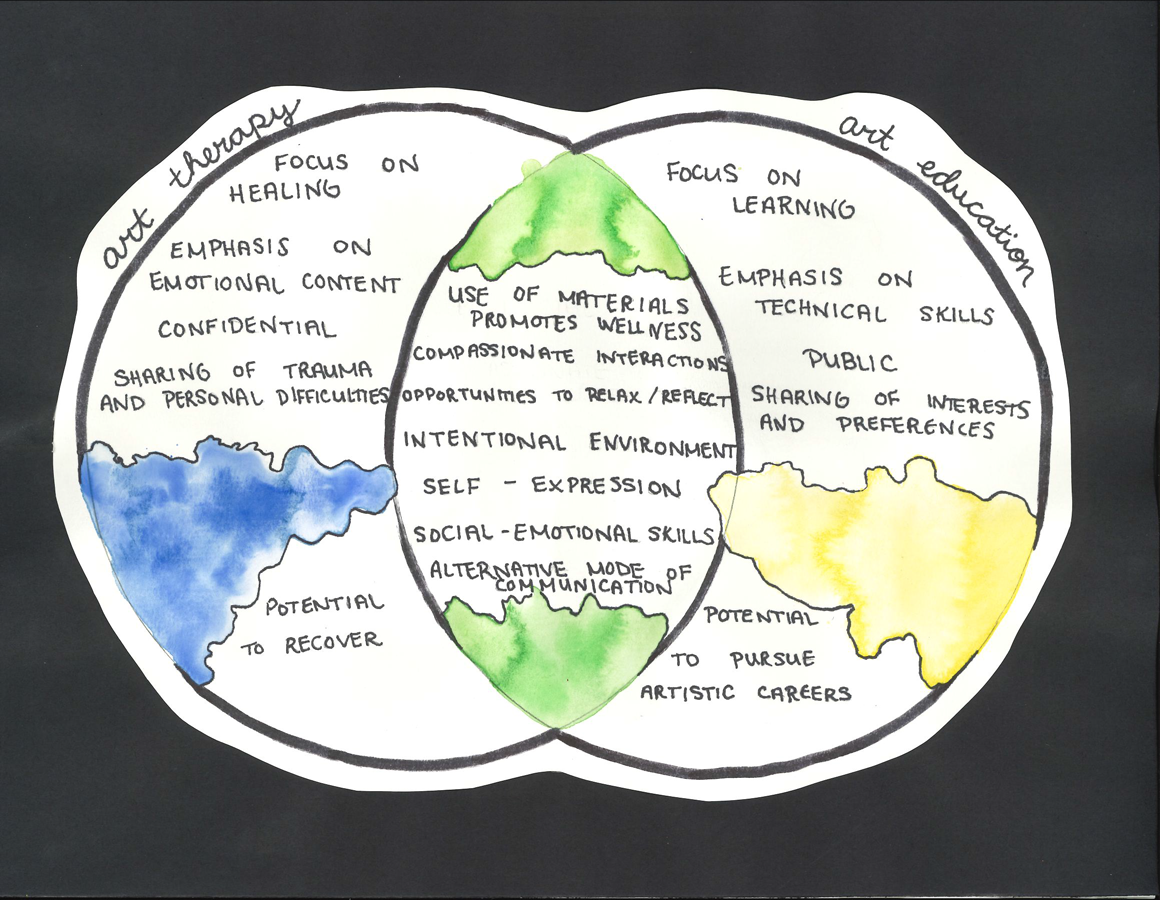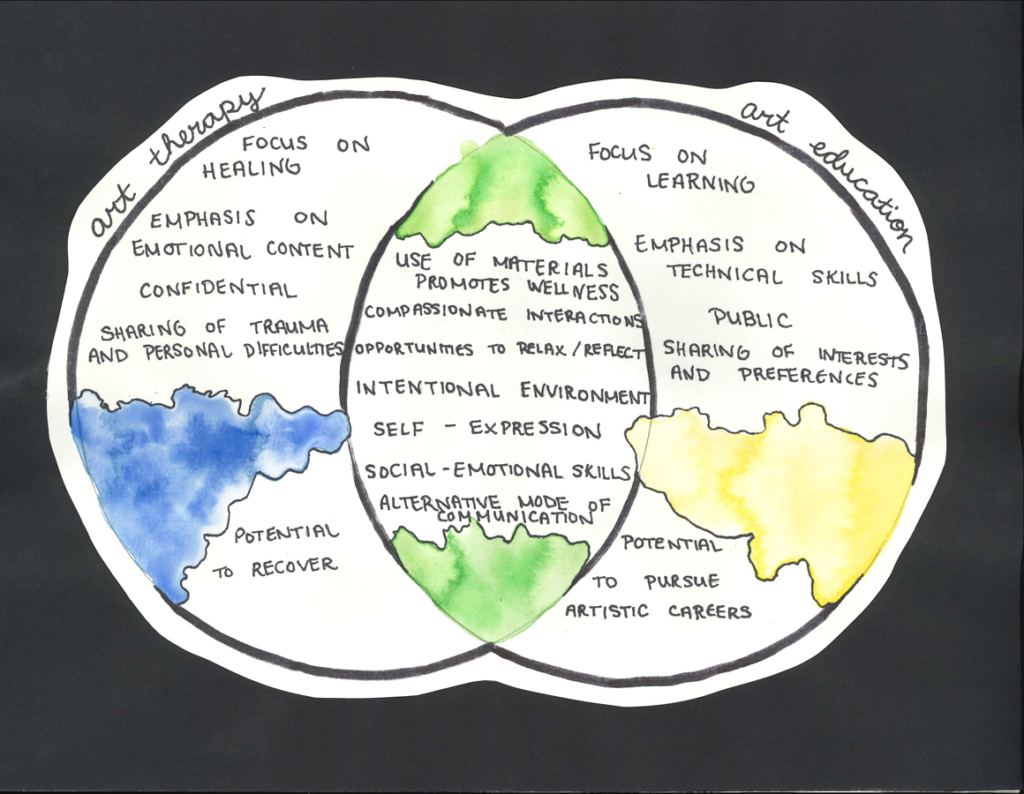
Making art has always been my favorite pastime, from creating crayon portraits of princesses in Kindergarten to taking a clay wheel class as an adult. Since childhood, I have felt that art is a meaningful communication tool and that the act of making art can positively impact my mood and community. With a background in studio art and art therapy, I have been deeply inspired by engaging in and leading art experiences in schools, hospitals, museums, and summer camps. I’ve also been witness to powerful connections that happen when a group might otherwise struggle to find harmony. This journey has led me to become an art therapist who teaches art at The College School. Some of you may wonder, what is art therapy and how does it come into play during art class?
Art therapy is meeting individually or in a group with a masters-level professional and using art supplies like pencils, paint, clay, and collage to heal, share, and grow through life experiences. The American Art Therapy Association states:
“Through integrative methods, art therapy engages the mind, body, and spirit in ways that are distinct from verbal articulation alone. Visual and symbolic expression gives voice to experience, and empowers individual, communal, and societal transformation.”
 I have discovered a lot of overlap between the goals of art therapy and The College School. TCS values every voice, taking risks in a safe environment, reflecting on experiences, and building an inclusive and diverse community with social-emotional character. For me, bringing art therapy practices to a classroom setting relieves pressure from the end product and places emphasis on community building, the learning environment, and the creative process.
I have discovered a lot of overlap between the goals of art therapy and The College School. TCS values every voice, taking risks in a safe environment, reflecting on experiences, and building an inclusive and diverse community with social-emotional character. For me, bringing art therapy practices to a classroom setting relieves pressure from the end product and places emphasis on community building, the learning environment, and the creative process.
My classroom routine is designed to achieve two main goals: learning and promoting overall wellness. We start each day with a circle time and a “question of the day.” This time is also used to forecast events, ask initial questions, and introduce new artists and projects. We often study artists that faced mental or physical exceptionalities, such as Vincent van Gogh, Frida Kahlo, and Chuck Close, and discover ways that art helped them cope and share their life experience. Then we dive into studio time, where we practice new techniques and use inspiration from various artists, cultural traditions, time periods, and styles to create individualized pieces. We discuss compassionate critiquing skills that can be used to provide classmates with feedback. When interpersonal conflicts and upset feelings inevitably arise, we utilize art and words to work through them and build upon our social-emotional toolkit. We end with three “shout-outs” for classmates who have shown kindness, supreme effort, or notable positive actions during class. While there can never be a guaranteed “safe place,” my intention is that kids can count on a warm and positive experience in art class.
When TCS students graduate, I want them to see art as a lifelong practice. All too often I hear adults say “I am not good at art, my art teacher heavily criticized my work, I have not made art since I was a kid.” It saddens me that many believe art-making is only worthwhile if you are skilled enough to impress others and gain fame and fortune for your art. Art is for everyone, and everyone is an artist in their own capacity–for work or play. Regardless of where my students’ journeys lead, I hope that they continue to value art-making as an expressive outlet and a joyful activity to engage in throughout their lives.
I have only just gotten started at TCS and imagine many exciting possibilities for the future of my classroom and teaching career. Every day is incredibly rewarding and brings new opportunities for connection and expression. I am grateful to take part in these artful experiences and to have joined this wonderful community of learners.


